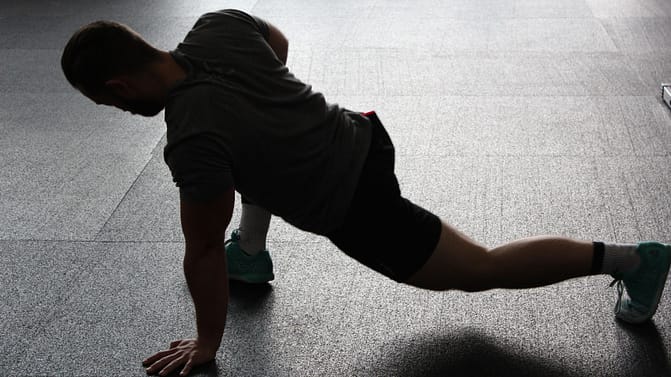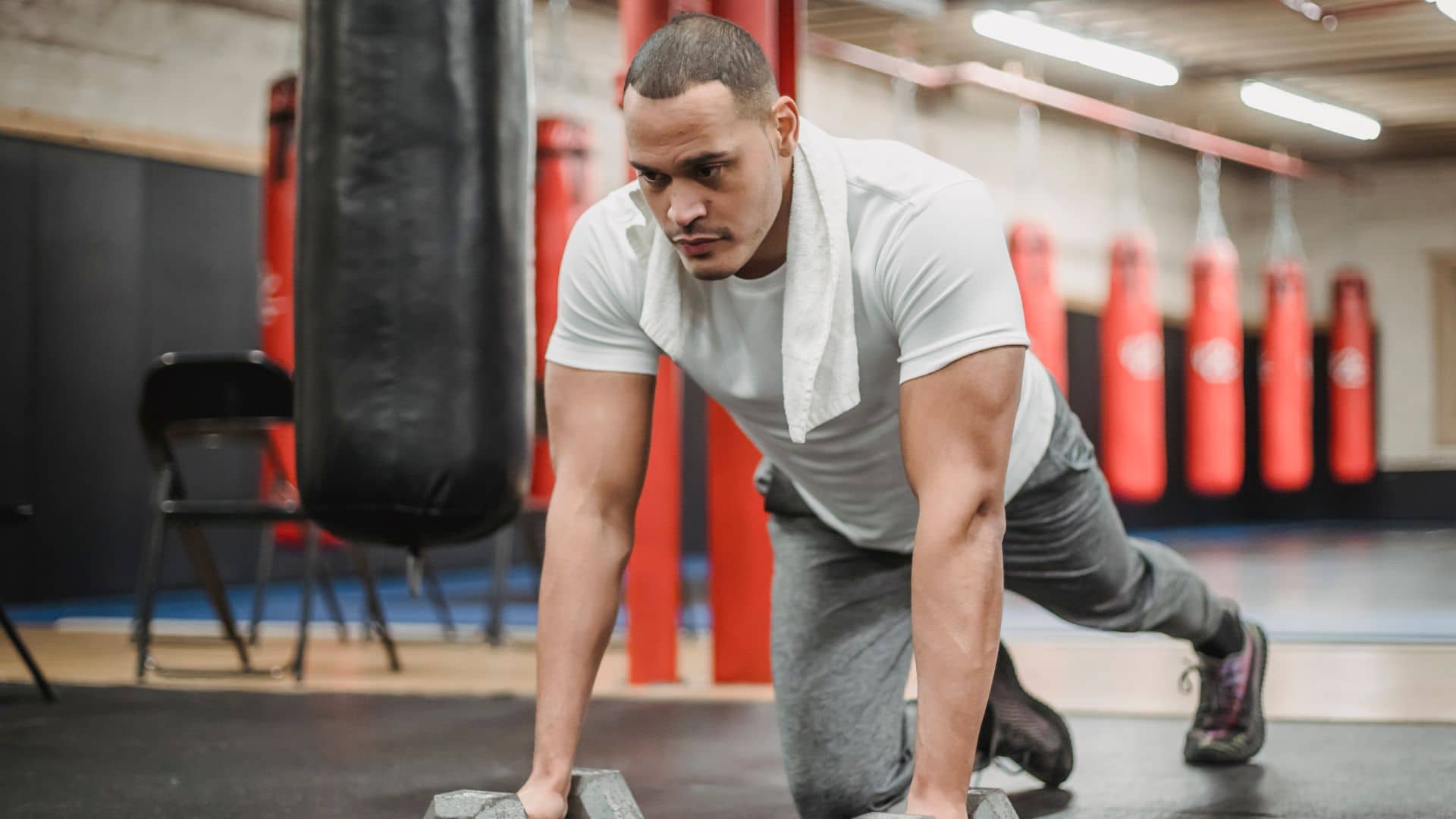If you’ve ever experienced weakness in your abductor hallucis brevis muscle after doing push-ups, you’re not alone.
Many individuals wonder why this specific muscle, located in the foot, can feel fatigued during an exercise that primarily targets the upper body.
In this article, we’ll delve into the reasons behind this phenomenon and provide insights on how to address it effectively.
Feeling weakness or discomfort in the abductor hallucis brevis during push-ups may be due to core instability, muscle imbalance, or overuse. Strengthening your core, correcting push-up form, stretching and mobilizing foot muscles, and allowing for proper rest and recovery can help address the issue. If problems persist, consult a healthcare professional or physical therapist for personalized guidance.
Core instability.
When performing a push-up, your body forms a straight line from your head to your heels, and this alignment relies on the stability and strength of your core muscles.
The core muscles include the muscles in your abdomen, lower back, and pelvis. These muscles work together to provide support and stability to your spine and pelvis.
If your core muscles are weak or not adequately engaged during push-ups, your body may compensate by recruiting other muscles to assist in maintaining the proper alignment.
One such muscle that can be recruited is the abductor hallucis brevis, which is located in the foot.
The abductor hallucis brevis muscle is responsible for moving and stabilizing the big toe.
However, when your core muscles are unable to provide sufficient support, the body may try to compensate by activating muscles in other areas, such as the feet, to help stabilize the body during the push-up exercise.
This compensation places additional stress on the abductor hallucis brevis muscle, which is not its primary function.
As a result, you may experience weakness or discomfort in the abductor hallucis brevis muscle during or after performing push-ups.
To prevent this, it is important to focus on strengthening your core muscles through specific exercises such as planks, bridges, or Russian twists.
By developing a strong and stable core, you can improve your body’s ability to maintain proper form and alignment during push-ups, reducing the need for compensation from other muscles and alleviating the strain on the abductor hallucis brevis muscle.
It’s important to note that individual anatomy and muscle imbalances can also contribute to this issue.
If you continue to experience weakness or discomfort despite working on your core strength, it may be beneficial to consult a healthcare professional or a physical therapist for a thorough evaluation and personalized guidance.

Muscle imbalance.
When performing push-ups, various muscles in your body work together to maintain stability and execute the movement.
This includes the muscles surrounding your foot, such as the ankle stabilizers and the intrinsic foot muscles.
If there are weaknesses or imbalances in these muscles, they may not function optimally during push-ups.
As a result, the body may compensate by recruiting other muscles to assist in stabilizing the foot. One of these compensatory muscles can be the abductor hallucis brevis.
The abductor hallucis brevis muscle is responsible for moving and stabilizing the big toe.
However, if the ankle stabilizers or the intrinsic foot muscles are not functioning properly, the body may rely more on the abductor hallucis brevis to provide stability to the foot during push-ups.
This increased recruitment of the abductor hallucis brevis muscle can lead to overuse or strain, resulting in weakness or discomfort in the muscle.
It is important to note that imbalances can occur due to various factors, including muscle weakness, previous injuries, or improper movement patterns.
To address this, it can be beneficial to focus on exercises that target the ankle stabilizers and intrinsic foot muscles to improve their strength and function. This may include exercises like ankle dorsiflexion exercises, calf raises, or toe curls.
By strengthening these muscles and improving their coordination, you can help restore balance and reduce the compensatory reliance on the abductor hallucis brevis during push-ups.
This, in turn, can alleviate the weakness or discomfort you may be experiencing.
If you find it challenging to identify specific muscle imbalances or if the weakness persists despite targeted exercises, it is recommended to consult a healthcare professional or a physical therapist.
They can provide a thorough assessment, identify any underlying issues, and provide you with appropriate guidance and exercises tailored to your specific needs.
Overuse or strain.
If you have been frequently performing push-ups or using incorrect form, it’s possible that you have placed excessive stress on the abductor hallucis brevis muscle.
Overuse or strain can result from repetitive or excessive loading of the muscle, leading to weakness or discomfort.
Push-ups primarily target the upper body, but they also require stability and engagement from various muscles throughout the body, including the muscles in the feet.
If you are performing push-ups too frequently without allowing sufficient time for rest and recovery, it can strain the muscles involved, including the abductor hallucis brevis.
Moreover, using incorrect form during push-ups can also contribute to overuse or strain.
When your form is compromised, certain muscles may be forced to compensate, leading to increased stress on those muscles.
In the case of the abductor hallucis brevis, it may be recruited more than necessary, resulting in overuse and subsequent weakness or discomfort.
To address this, it is important to ensure proper push-up technique and allow for adequate rest and recovery between sessions.
Focus on maintaining good alignment, keeping your body in a straight line, and avoiding excessive strain on any particular muscle group.
It’s also essential to listen to your body and give it enough time to recover. If you’re experiencing weakness or discomfort in the abductor hallucis brevis or any other muscle, it may be a sign that you need to reduce the frequency or intensity of your push-up workouts.
Incorporating rest days into your exercise routine and gradually increasing the intensity can help prevent overuse injuries and promote muscle recovery.
If the weakness or discomfort persists despite modifications to your push-up routine, it is advisable to consult with a healthcare professional or a physical therapist.
They can provide a thorough assessment, offer specific recommendations, and help you develop a safe and effective exercise plan.
Here’s a tabular format addressing the why, how, when, what to consider, and an example related to feeling weakness in the abductor hallucis brevis muscle during push-ups:
| Aspect | Why | How | When | What to Consider | Example |
|---|---|---|---|---|---|
| Why | Core instability | Strengthen core muscles | During push-ups or exercise | Weak core muscles can stress other muscles | Weak core muscles contribute to foot weakness during push-ups |
| Muscle imbalance | Balance foot and ankle muscles | During push-ups or exercise | Imbalances strain compensatory muscles | Weak ankle stabilizers strain abductor hallucis brevis muscle | |
| Overuse or strain | Avoid overtraining, use proper form | During push-ups or exercise | Excessive stress can lead to weakness or discomfort | Frequent push-ups without proper recovery strain the abductor hallucis brevis muscle | |
| How | Strengthen core muscles | Perform exercises like planks, | Regularly, as part of a workout | Focus on engaging core throughout exercises | Engaging in core exercises such as planks |
| Russian twists, or bird dogs | routine | and maintaining proper form | and maintaining proper form during push-ups | ||
| Balance foot and ankle muscles | Perform ankle dorsiflexion exercises, | Regularly, as part of a workout | Address specific muscle imbalances | Strengthening ankle stabilizers with calf raises | |
| calf raises, or toe curls | routine | and weaknesses | and toe curls | ||
| When | During push-ups or exercise | Incorporate exercises into workouts | During exercise or training sessions | Focus on proper muscle engagement and stability | Performing core exercises before push-up sets |
| What to Consider | Weakness in core muscles | Gradually increase intensity | Listen to your body’s signals | Avoid pushing through pain or discomfort | Reducing push-up repetitions if experiencing discomfort |
| Compensation patterns | Ensure proper form and alignment | Pay attention to muscle imbalances | Seek professional guidance for assessment | Consulting a physical therapist for evaluation | |
| Overtraining or incorrect form | Allow for adequate rest and recovery | Balance exercise frequency and intensity | Modify routine to prevent overuse or strain | Taking rest days between push-up workouts | |
| Example | Weak core muscles contribute to foot weakness during push-ups | Perform planks and focus on engaging core | During regular workout routine | Maintaining a straight line from head to heels | Feeling improved stability in the foot during push-ups |
Please note that the example provided is a general representation and may not apply to everyone. Individual experiences and circumstances can vary.
Conclusion.
In conclusion, feeling weakness in the abductor hallucis brevis muscle during push-ups can be attributed to several factors.
It may be related to core instability, with the core muscles not adequately supporting your body during the exercise.
This can place additional stress on the abductor hallucis brevis muscle, leading to weakness or discomfort.
Another possible cause is muscle imbalance, where weaknesses or imbalances in the muscles surrounding the foot, such as the ankle stabilizers or intrinsic foot muscles, can result in compensatory patterns during push-ups.
The abductor hallucis brevis muscle may be recruited more than usual to stabilize the foot, leading to strain on the muscle.
Additionally, overuse or strain can occur if push-ups are performed frequently or with incorrect form. Excessive stress on the abductor hallucis brevis muscle due to overuse or compensatory movements can result in weakness or discomfort.
To address these issues, it is recommended to focus on strengthening your core muscles, improving muscle balance around the foot, and ensuring proper push-up form.
Exercises targeting the core, ankle stabilizers, and intrinsic foot muscles can help address these weaknesses and imbalances.
Additionally, allowing adequate rest and recovery, modifying exercise intensity, and seeking professional guidance if needed can aid in preventing and managing weakness or discomfort in the abductor hallucis brevis muscle during push-ups.
Remember, it’s important to listen to your body and make adjustments to your exercise routine as necessary.
Prioritizing proper form, muscle balance, and recovery can contribute to a safer and more effective workout experience.


